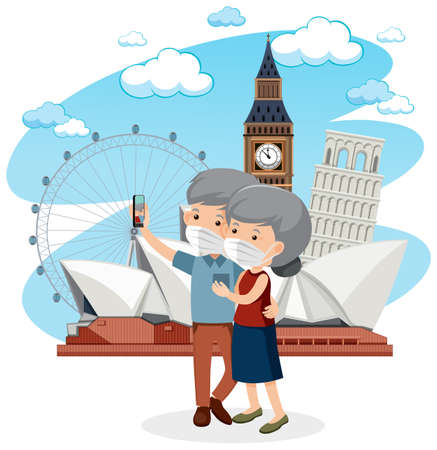Understanding Travel Insurance Basics
Planning an international trip is exciting, but unexpected events can quickly turn your adventure upside down. That’s where travel insurance comes in—it offers financial protection and peace of mind while you explore the world. But what exactly does travel insurance cover, why do you need it for international journeys, and what are some common misconceptions Americans might have? Let’s break it down.
What Does Travel Insurance Cover?
Travel insurance is designed to help you handle surprises that could otherwise be costly or stressful. Here’s a quick look at the main types of coverage you’ll typically find:
| Coverage Type | What It Protects |
|---|---|
| Trip Cancellation/Interruption | Reimburses prepaid expenses if you need to cancel or cut your trip short due to covered reasons (like illness or family emergency). |
| Medical Expenses | Covers emergency medical treatment abroad, which is especially important since U.S. health insurance rarely applies overseas. |
| Emergency Evacuation | Pays for transport to the nearest adequate medical facility during emergencies. |
| Baggage Loss/Delay | Compensates for lost, stolen, or delayed luggage and personal belongings. |
| Travel Delay | Covers additional expenses if your trip is delayed due to covered reasons (like weather or airline issues). |
Why Is Travel Insurance Important for International Trips?
If you’re traveling outside the United States, your regular health insurance likely won’t cover medical emergencies abroad. Hospital bills in foreign countries can be shockingly high, and paying out-of-pocket can be financially devastating. Plus, travel mishaps like flight cancellations, lost baggage, or political unrest are more challenging to deal with when you’re far from home. Having travel insurance means you won’t have to navigate these situations alone or bear all the costs yourself.
Common Misconceptions U.S. Travelers Have About Travel Insurance
- “My credit card covers everything.” Some credit cards offer basic travel benefits, but coverage limits are usually low and may not include medical emergencies or evacuation.
- “Nothing will happen to me.” Even the most careful travelers can run into trouble—accidents and illnesses don’t take vacations!
- “It’s too expensive.” Travel insurance is often much less than you think—typically 4-10% of your total trip cost—and can save you thousands if something goes wrong.
- “I only need it for exotic destinations.” Problems like lost luggage or flight delays can happen anywhere, even in countries with excellent healthcare systems.
The Bottom Line on Understanding Travel Insurance Basics
The right travel insurance policy acts as a safety net, protecting both your wallet and your well-being while you’re abroad. Understanding what’s covered—and what isn’t—sets the foundation for choosing the best plan for your next international adventure.
2. Assessing Your Personal Needs and Trip Details
Before you buy a travel insurance plan, it’s important to think about your unique situation and the specifics of your upcoming trip. Choosing the right coverage means looking at more than just price. Here’s how to break it down:
Consider Your Destination
The country or region you’re visiting can make a big difference in the type of insurance you need. Some countries have expensive healthcare, while others may have higher risks for theft or natural disasters. For example, if you’re traveling to Europe, you might want strong medical coverage due to high healthcare costs. If you’re going to a remote area, emergency evacuation coverage could be crucial.
Destination Factors Table
| Destination Type | Coverage to Prioritize |
|---|---|
| Developed Countries (e.g., USA, UK) | Medical & Trip Cancellation |
| Remote/Adventure Destinations | Emergency Evacuation & Adventure Sports Coverage |
| Cities with High Theft Rates | Baggage & Personal Belongings Protection |
| Countries with Political Instability | Trip Interruption & Political Evacuation Coverage |
Think About Your Planned Activities
Your itinerary also affects what kind of policy you’ll need. Are you planning on hiking, scuba diving, or skiing? Many standard policies don’t automatically cover adventure sports or high-risk activities, so check for add-ons or special plans if your trip is action-packed.
Activity Coverage Examples
- Hiking/Backpacking: Emergency rescue and evacuation coverage
- Skiing/Snowboarding: Sports injury protection
- Diving: Specialized medical evacuation for water sports accidents
- Cultural Tours: Basic medical and trip cancellation coverage usually sufficient
Review Your Health Status and Pre-Existing Conditions
If you have chronic health issues or take regular medication, look for plans that offer pre-existing condition waivers. Some policies require you to purchase insurance soon after booking your trip to get this benefit. Also, check if the plan covers prescription medication replacement abroad.
Health-Related Questions to Ask Yourself:
- Do I have any ongoing medical conditions?
- Will I need access to specific medications?
- Is there a risk of needing medical care during my travels?
Factor in Your Travel Companions
The people joining you on your trip matter too! Family plans are available if traveling with kids or seniors. Make sure everyone’s needs—especially age-specific requirements—are covered by the plan. Some policies even let you add friends who aren’t related by blood.
Travel Companion Considerations Table
| Companion Type | Special Coverage Tips |
|---|---|
| Seniors (65+) | Check for higher medical limits and coverage for age-related illnesses |
| Children/Minors | Pediatric care and family-friendly coverage options |
| Non-family Friends | Add them as named insureds if possible; check group policy discounts |
| Larger Groups/Tours | Look for group travel insurance rates and comprehensive coverage options |
By carefully evaluating these factors—your destination, activities, health needs, and travel companions—you’ll be able to find a travel insurance plan that truly fits your next international adventure.

3. Comparing Policies and Providers
Choosing the best travel insurance isn’t just about picking the first option you see online. In the U.S., there are dozens of reputable insurers, but not every plan is created equal. Here’s how to compare policies and providers like a pro, so you can travel with confidence.
Check the Coverage Details
Start by looking at what each policy covers. Some plans focus on medical emergencies, while others highlight trip cancellation or lost luggage. Make sure the plan fits your travel style and needs. Don’t forget to check for exclusions—these are situations or events that aren’t covered.
| Feature | What to Look For |
|---|---|
| Medical Coverage | Emergency care, hospital stays, evacuation, pre-existing condition waivers |
| Trip Cancellation/Interruption | Refunds for illness, injury, severe weather, or other covered reasons |
| Baggage Protection | Coverage for lost, stolen, or delayed luggage and personal items |
| 24/7 Assistance | Access to a support hotline for emergencies anywhere in the world |
| Adventure Activities | Covers sports or activities that might be considered risky (like skiing or scuba diving) |
Evaluate Insurance Companies
The American insurance market is full of options, from big names like Allianz and Travel Guard to specialized providers. Look up each company’s financial strength (A.M. Best ratings are a good place to start), customer service reputation, and how long theyve been in business.
Top Tips for Evaluating Providers:
- Financial Stability: Choose companies with strong ratings from agencies like A.M. Best or Standard & Poor’s.
- Customer Service: Reliable 24/7 support is a must when you’re far from home.
- Claims Process: Read about how easy it is to file a claim and get reimbursed—some insurers make it simple, others less so.
- Licensing: Make sure the provider is licensed in your state—check with your state’s Department of Insurance if unsure.
Read the Fine Print Carefully
This might feel tedious, but reading the fine print is critical. Look out for details on deductibles, coverage limits, exclusions, and any required documentation if you need to file a claim. Some policies look great on paper but have strict requirements that make claims hard to process.
Questions to Ask Yourself:
- Does this plan cover all destinations I’m visiting?
- Are high-risk activities included?
- If I have pre-existing conditions, will they be covered?
- What are the maximum payout limits?
- Is there a deductible I’ll need to pay?
Leverage Customer Reviews and Ratings
The American market has plenty of review sites where real travelers share their experiences. Sites like Trustpilot, Better Business Bureau (BBB), and even Reddit threads can provide insights into how companies handle claims and treat their customers. Pay attention to recent reviews—companies can change over time!
4. Key Features to Look For
When choosing the best travel insurance plan for your next international adventure, it’s important to know what features matter most. Not all plans offer the same benefits, so focusing on must-have protections can make your trip safer and stress-free. Here are the key features every U.S. traveler should consider:
Emergency Medical Coverage
This is one of the most critical features, especially since your U.S. health insurance may not cover you abroad. Emergency medical coverage pays for hospital stays, doctor visits, prescriptions, and sometimes even emergency dental care if you get sick or injured while traveling.
Trip Cancellation & Interruption
If you need to cancel your trip due to illness, a family emergency, or other covered reasons, this benefit can reimburse your non-refundable expenses like flights and hotel bookings. Trip interruption coverage helps if you have to cut your trip short for similar reasons.
Baggage Loss & Delay
Losing your luggage or having it delayed can ruin your first days abroad. Travel insurance plans often include compensation for lost, stolen, or delayed bags, helping you replace essentials until your belongings arrive or are recovered.
24/7 Assistance Services
Look for plans that offer 24/7 travel assistance hotlines. These services can help with emergencies, language barriers, finding local doctors or hospitals, replacing lost passports, and more—anytime, anywhere in the world.
Feature Comparison Table
| Feature | Why It Matters | Typical Coverage Limits |
|---|---|---|
| Emergency Medical | Covers medical bills abroad where U.S. health insurance may not apply | $50,000 – $500,000+ |
| Trip Cancellation/Interruption | Reimburses prepaid costs if you have to cancel or cut your trip short for covered reasons | Up to total trip cost |
| Baggage Loss/Delay | Pays for lost or delayed luggage and essential items needed while waiting | $500 – $2,500+ |
| 24/7 Assistance Hotline | Provides round-the-clock help in emergencies or when navigating local issues overseas | Included with most plans |
Tip:
Always review each plan’s details and exclusions before purchasing to ensure it covers your specific needs and destinations.
5. Tips for Purchasing and Making a Claim
Find the Best Time to Buy Travel Insurance
The best time to buy travel insurance is as soon as you book your trip. Buying early helps you access benefits like pre-existing condition waivers and “cancel for any reason” coverage. Here’s a quick guide:
| Booking Stage | Best Insurance Options Available |
|---|---|
| Immediately after booking | All coverage options, including pre-existing condition waiver and “cancel for any reason” add-ons |
| 1-2 weeks after booking | Most standard policies still available, but some special coverages may no longer apply |
| Last minute (just before departure) | Basic coverage only; limited options and benefits |
Understand Common Exclusions in U.S. Travel Insurance Plans
No one likes surprises—especially not when it comes to your insurance claim being denied! Always read the policy details to know what’s not covered. Here are common exclusions:
- Pre-existing medical conditions: Unless specifically included, many plans won’t cover these.
- Adventure sports: Activities like skydiving, scuba diving, or mountaineering may be excluded unless you buy an extra rider.
- Certain destinations: Some policies exclude high-risk countries or areas under government travel advisories.
- Unattended belongings: Lost or stolen items might not be covered if left unattended in public places.
- Pandemics or epidemics: Check if COVID-19 or other outbreaks are covered under your plan.
How to File a Travel Insurance Claim from Abroad or Back in the U.S.
Step-by-Step Guide to Filing a Claim
- Contact your insurer ASAP: Use their 24/7 hotline or app if you have an emergency abroad.
- Gather documentation: Keep receipts, medical reports, police reports (for theft), and proof of delay or cancellation.
- Fill out claim forms: Most companies let you submit online, by email, or via mail once you’re back home.
- Submit within deadline: Check your policy for how many days you have to file after the incident—typically 30-90 days.
- Follow up regularly: Don’t hesitate to call your claims adjuster if there’s a delay or missing documents.
Tips for Smoother Claims Processing
- Take photos of all relevant documents and damages.
- Email yourself copies of important paperwork while traveling.
- If possible, start your claim while still abroad—it can speed things up!
- If denied, ask for a clear explanation and see if you can provide additional info.
By knowing when to buy, understanding what’s excluded, and preparing for smooth claims handling, youll travel with greater peace of mind on your next international adventure.


